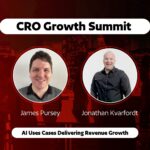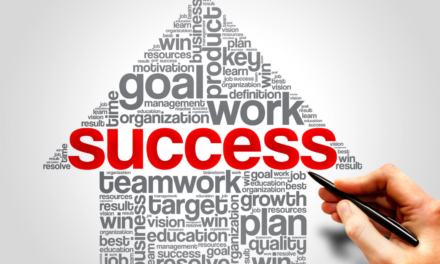
A CRM Pioneer Steps Into The Light

The pressure for reps to hit their numbers and for their employers to get a return for investors has never been greater.
On average 47-62% of reps make quota which is unacceptable and creates real business and human problems. In spite of billions spent on CRM, SFA tools, and automation we still haven’t significantly improved quota attainment. In fact, we seem to have made it worse.
As leaders, we need to fix this, stop blaming the sellers and finally deliver on the promise of CRM, SFA and automation.
Rather than writing an article where it seemed I was ranting, I decided to survey the actual salespeople—not leaders, not consultants, actual Individual Contributors. Crazy idea to ask the end users, however the responses echoed what’s been whispered (and ignored) for years:
- There is zero correlation between CRM systems (Salesforce, HubSpot) and hitting quota. In fact, most reps don’t even see them as their most valuable tools.
- The tools reps do value? ZoomInfo, LinkedIn Navigator, Apollo, and ChatGPT/Perplexity—anything that helps with research.
- Sales engagement tools like SalesLoft, Outreach, and Gong? Meh. Neither loved nor hated.
- Reps who spend at least two hours daily on account research (both prospecting and deal management) are more likely to exceed quota.
- Coaching matters—a lot. Combined with research, it seems to have the strongest correlation to quota attainment. Reps who make quota tend to get more 1:1 coaching from their managers. Yet, coaching time is lacking, likely due to headcount cuts or poor leadership training. Either way, we need to fix it. A 5:1 or 6:1 rep-to-manager ratio might be the key to better performance.
I also asked if selling had gotten easier or harder with today’s tools. The results? No consensus. Some think it’s harder, some easier—but neither feeling tools correlates with quota attainment. Turns out, motivation is personal, competition changes, the macroeconomics change. Some thrive on the challenge; others prefer smooth sailing. We’re all human, after all. Technology will not fix or change this, at least not in my lifetime.
What Now?
Do we keep chasing new “magic beans” that promise to transform sales? ( Blowing Your Budget…Aug.2024 ) Keep beating the sales team until morale improves? ( We Have Met The Enemy…March 2023 )
No. We rebuild the car while it’s still on the track—this time with better-trained -or better training- for the drivers.
- Adopt a modern GTM framework. The decades-old sales funnel isn’t cutting it. Check out the WinningbyDesign Bowtie (or something similar) to map out your full revenue engine—from lead gen to renewal. Left to right, not top to bottom.
- Define what should happen at each stage. Don’t accept “this is how we’ve always done it.” If there’s no measurable progress, it’s broken. If it isn’t meeting or exceeding the customer expectation, it’s broken. (Pro tip: Apply aging metrics to each stage to spot bottlenecks.)
- Audit your tech stack—ruthlessly. What’s actually advancing deals? Who’s using what? Expect tough conversations with your CFO and vendors when you decide to terminate or significantly reduce current contracts.
- Build your process before buying more tools. Every step should make it easier for prospects to say, “Yes, we want to work with you.” A new solution. Some great AI will not fix a bad process but it can destroy you or your brand.
- Retrain your teams in the same room, at the same time. Marketing, Sales, and Customer Success should function as a single, well-oiled machine. Misalignment leads to breakdowns (and lost deals). Process creation must be done across functions and at the same time to ensure what you are deploying makes sense and advances your steps and stages.
- Now (and only now) decide on tech. Choose tools based on your actual process, your “to be” state, ensuring transparency and clear expectations.
A Note to Solution Vendors, selling sales tech, this is for you:
If your product is so simple that users just “click a URL and go,” you’re setting yourself up for high churn and low ROI. Unless you’re a transactional app (<$3K ARR), you need a real sales process. Your onboarding should improve existing processes (or your own Subject Matter Experts need to help build one if none exists). And please, make short explainer videos for end users. Tell them what your tool does, why it matters, and where to get help or provide “love it/hate it” feedback.
If this sounds ridiculous, just compare CAC to LTV. Then consider how much usage data you’d get from engaged customers—data that could fuel better features, higher retention, and increased pricing power. You know, those things that lead to increases in new revenue and market penetration. It’s what “Product Led Growth” is supposed to be doing for you.
The Real Promise
You’re here to build solutions and processes that help reps and companies to hit their numbers, to help businesses ( our customers) to exceed revenue expectations.
The goal shouldn’t be to just sell your app to a company (CAC)—it’s to become indispensable (LTV).
There has been a long-held belief that sales and marketing technology would make the lives of sales people easier. We would find it easier to hit quota. As a CRO and sales leader, I expected incredible insights into the business and our decision making would be faster and more accurate.
This has not happened. Before you start pounding your fingers on your keyboard in an angry response, I ask you to set aside your own biases to understand my own journey to this point of view.
Sometime around 1994 the large corporation that I was working for enrolled me and my sales team in a pilot program for Technology Enabled Selling (TES). The big perk? We got laptops. Yes, you read that right—I got my first sales software and a laptop over 30 years ago. This was to replace a decades old system of index cards and manilla folders with notes that were often scant at best.
When I left that company, I was so convinced of the value of sales automation that I set myself up using ACT! ( ask ChatGPT what that was ). At the first chance, I jumped into the emerging industry focused on automating salespeople. What started as TES soon evolved into Sales Force Automation (SFA).
My SFA selling journey took me to Siebel Systems, where, alongside industry analysts like Gartner, we birthed Customer Relationship Management (CRM). The idea expanded beyond sales to encompass everyone touching the customer journey—marketing, customer service, field service, customer support. It was the sales version of The Jetsons (another reference for ChatGPT). Salesforce and Hubspot weren’t even a concept yet.
We were promised more money, more free time, and fully automated workdays. Tom Siebel even wrote Virtual Selling in 1998, predicting a future where CRMs would magically tell us who was ready to buy and when over our morning coffee.
Fast-forward more than 25 years and we’re still not there.
My survey illustrated that the gap is not technology, it is with us as humans. The companies who start to reengineer, rebuild the car and train the driver as it goes around the track will find they can accelerate faster, pass in the turn, overtake competitors and outmaneuver even the largest, most established vendors in their space.
It’s time.


































